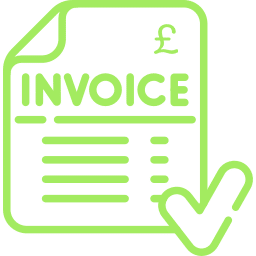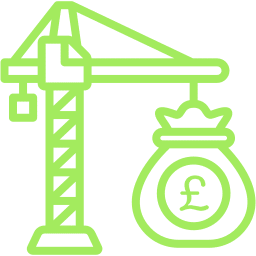Planning to undertake a large building or regeneration project? If the answer is yes, then you’re going to need to make some important funding decisions. It is imperative that you make the right choices for your project, choosing the right property development finance.
This article will provide a step-by-step guide to property development finance discussing the following topics:
- An overview of property development finance
- When might finance be necessary for a development project
- Different types of property development finance
- How to apply for property development finance
- Application Checklist
An overview to property development finance
Property development finance is the large-scale funding of big building projects and/or large building renovation works. This might include new residential housing projects, office block construction or more expansive regeneration initiatives.
It is not used for smaller developments where home renovations or property improvement is involved. When this is the case, there are other types of bridging finance that can be used.
When might finance be necessary for a development project
The scale and scope of a project can dictate the type of finance options available. For large projects, ground-up development finance will need to be sought. This includes the purchase of the land and funds for construction.
Property development finance will be approximately 70-80% of the build cost, leaving a significant amount of funding to be found by the developer.
If a wider portfolio of properties is owned, these can be taken as security in lieu of the developer having to finance the project with their own cash reserves.
Tips for planning your building work
There are a multitude of finance options available dictated by the level of interference undertaken in the refurbishment or renovation of the property. The different types of building work include:
Light redevelopment/refurbishment
Relatively unobtrusive work to the building, including aesthetic, non-major structural, internal re-working and improvement to walls, ceilings and floors. Funding here tends to be short-term and the property can be ‘turned-around’ in short timescales using auction or bridging finance.
Heavy renovation
More extensive than merely aesthetic changes to the building, heavy refurbishment includes major structural changes such as extensions and the moving of internal supporting walls. In this case, finance options tend to be longer-term bridging finance or short-term commercial mortgage finance.
Ground-up development
Requiring major plans and a team of builders, architects and tradespeople, ground-up development involves everything from land purchase to completion. Finance will need to be taken over many months or years, and property finance becomes a more complex series of investment release until completion of the project.

Different types of property development finance
As finance options are tailored to the specific project, it can often be confusing trying to understand which to pursue. Here are the different types of property development finance available:
Commercial Mortgages
Used to help you purchase properties like offices, industrial units and shops. If it isn’t a private residential property, a commercial mortgage can be used to purchase it.
By far the easiest of the funding vehicles to understand, they work in much the same way as a standard private mortgage spreads payments a number of years to suit your needs.
Example Case Study:
A small bakery currently rents their premises but has an opportunity to buy the building.
Instead of having to continue to pay out large amounts of rent which can be affected by rental increases, the bakery decides to purchase it and substitute the dead money paid out in rent with the investment of buying a commercial property.
For most businesses, it might be easier for to access a commercial mortgage than a start-up but that isn’t necessarily the case and it is often up to the lender to assess the levels of risk for each case on merit.
Auction Finance
Primarily used for property buyers buying auctioned property.
Most auctions require bids to be paid within a certain amount of time (up to 28 days). Getting access to large levels of finance in short periods of time is what this type of finance does best.
Example Case Study:
A buyer has bought a property at a discounted rate at an auction and needs to secure payment – in full – with the auction house within a few weeks.
They have already raised the necessary deposit required on the day and by using auction finance they receive the funds needed to purchase the property quickly. They might have agreed beforehand the level of funding required or have it arranged afterwards.
Bridging Finance
A short-term funding option that can essentially ‘bridge‘ the gap between buying a property and securing a more permanent type of finance for it.
These are generally short in length, usually lasting a few months, but they tend to provide funding very quickly. They are also very useful when purchasing property and completing a quick refurbishment or development of the building (property flipping). They can act like a short-term mortgage between buying a property at auction and selling it.
Example Case Study:
A property developer finds an old warehouse they intend to convert or refurbish. It doesn’t need any major building works but does require some internal refitting.
For projects requiring just a few months between purchase and becoming an asset providing revenue, bridging finance is the funding vehicle of choice. Their lender contact can arrange finance to purchase the property, as well as providing enough funding to refurbish.
How to apply for property development finance

When applying for property development finance it pays to do your homework. This means ensuring all plans and projections have been well thought out and any potential barriers bridged.
Lenders base property finance loans on the feasibility of a project, making it critical to ensure that you can demonstrate your project has the capacity to generate income and profit.
If you are experienced in property development, then hopefully you can show a solid track record, but, if you are new to the property development field, then you may find it precludes you from the biggest property development projects and lenders will view you with caution.
There are always exceptions though and a shortfall in knowledge can be made up with some accurate and well-researched projections based on criteria your lender will understand.
How buy-to-let lending is decided
Often before being considered by a buy-to-let lender, you will need to demonstrate a certain minimum income. The actual income threshold will vary from lender to lender, some might be high, some lower, but to ensure you have access to the entire market, it is wise to demonstrate a solid existing income.
For anyone holding multiple properties (and therefore multiple mortgages), you may experience that the number of pre-existing mortgages you have can preclude you from requesting anymore. At this point, you may look to streamline your property finance by looking at portfolio finance.
Lending relies on property yield
The key to a successful property investment is its ability to generate income. The easiest way to calculate how much income a property can generate is the rental yield.
The yield is the rental return as a percentage of the property purchase price. So when you have purchased, invested and renovated the property, your total cost will dictate how much you borrow, but the final property yield calculation will dictate which lenders will lend and what rates they will offer.
Why GDV is important
One of the foundations of your property development finance application will be your Gross Development Value (GDV). It lets your lender establish if your project is lend-worthy. Many lenders might not consider an application if the total build costs exceed 75% of the GDV or end value of the project.
A worthwhile investment is one that allows the lender to loan 65% of the GDV, even if this equates to 100% of total build cost.
Experience matters
Having experience in property development cannot be underestimated and lenders like to see some previous involvement in a project – however small – that has been successful and profitable. It is helpful if you have a good team of builders, planners and architects on your team.

Property Development Finance Application Checklist
You will need to have figures and answers for a wide range of project and financial questions asked by the finance provider. Make sure you have thought of everything before you apply.
– Purchase price
– Total build cost
– Expected end value (GDV)
– Contingency plan
– Full costing breakdown
– Clear timescales (including expected or possible contingencies)
– Your ‘Property Development CV’
– Breakdown of your professional team (builders, planner, architect etc.)
– Planning permission (including restrictions)
– Building regulations
– Potential yield of project
Lenders want solid investments with good rental yield when lending property finance. When applying for property development finance, it pays in both the short and the long term to have a good rebuild plan, give consideration to any setbacks you might incur and have a clear idea of the end value of your property.
The type of property development will dictate how the finance options.
If you have plans to develop a property or are looking to buy at auction, we can help you discover what’s best for your business.
Give us a call on 0333 006 9141 to talk through your options or request a call business finance consultation below.






















